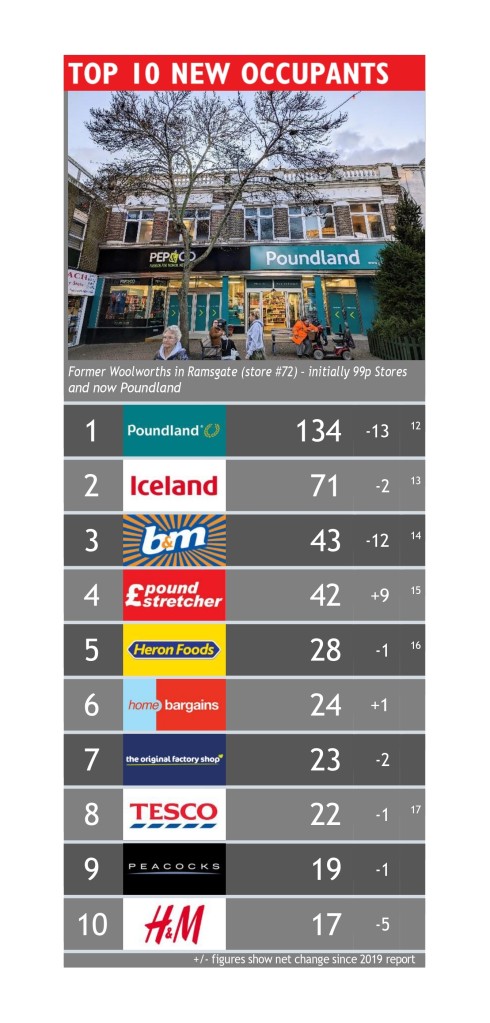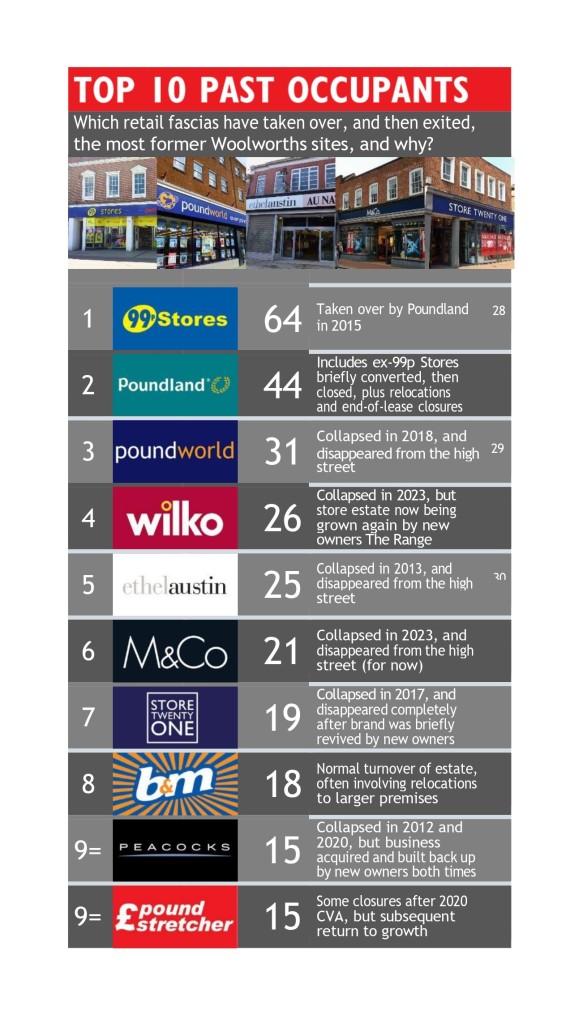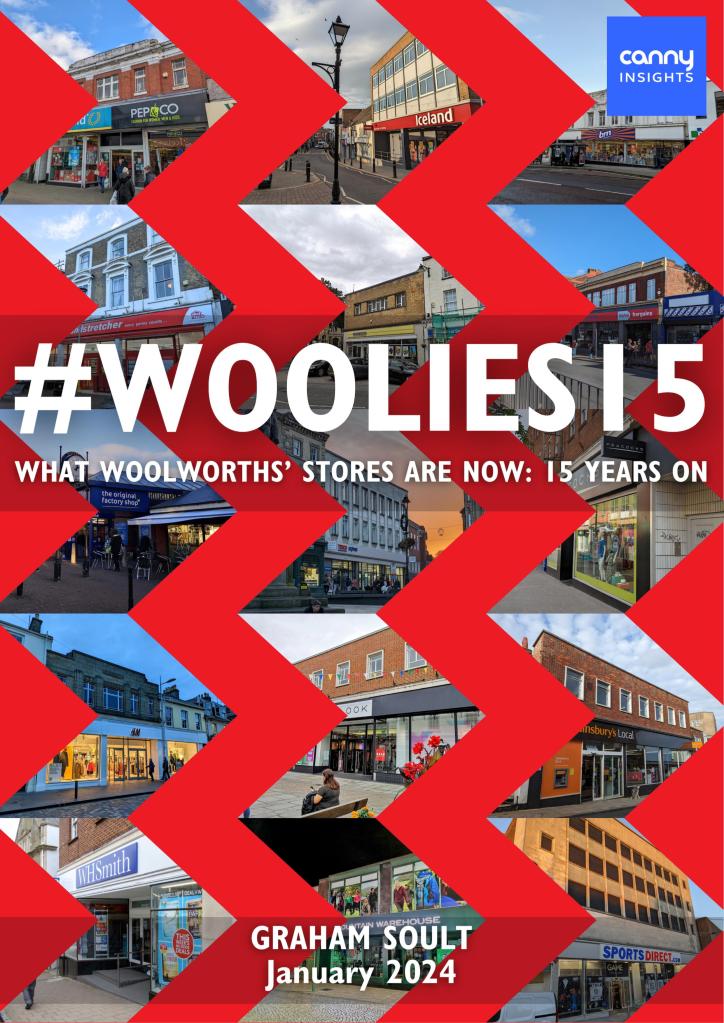Early January 2024 marked 15 years from the collapse of Woolworths in the UK and the closure of its 807 mainly high street stores. There are several potential parents of the phrase ‘death of the high street’, spanning many decades, but for many the failure of the iconic Woolworths is the true signifier of retail change/high street collapse (depending on your view).
On the 10th anniversary of the failure I wrote a piece on this blog about the collapse and the aftermath. I drew heavily on the work of the expert in this field Graham Soult (@soult) and his report on the fate of the stores 10 years on. In the interim 5 years Woolies has continued to fascinate and the nostalgic spectacles are often on view suggesting the need for its rebirth.
Well, it is now 2024 and we get to do it all again, as Graham Soult has updated his work and produced a report on Woolies 15 years on. As before it is meticulously researched and documented and has a wealth of detail and discussion on various issues and locations. If you have not seen it you can download a copy from the cannyinsights website.
I can’t do justice to the report’s detail in this post but amongst the headlines are:
- 83% of Woolies stores remain in use by other retailers;
- c40% of the sites house discount variety stores i.e. stores with a Woolies type offer;
- 20% of sites are now convenience grocers;
- Over the last 5 years there are fewer fashion occupiers, more subdivision and more independent users;
- There is more non-retail use than in 2019 and a growing number of sites have a housing component;
- 48% of the locations have the same tenant that took over 15 years ago.
At one level none of this is surprising; many of the trends are nationally and sectorally recognisable. But perhaps the stability is remarkable, though given the site locations and store buildings of many Woolworths, perhaps not? They were/are a key part of many towns’ streetscapes.


A final thought: in my previous blog post I questioned the nostalgia for Woolworths and suggested, using their own data, that for 20+ years they had been haemorrhaging customers. Many had already walked away from Woolies, so their collapse affected fewer retail customers than assumed – and that niche was filled quickly by B&M, Poundland and so on. Nostalgia was alive and well in 2009. For Woolies workers it was a disaster, but for their customers, was it really? Or is it (was it) mostly nostalgia and hype?
Woolworths collapsed in 2009. No one under 15 has ever seen one in real life. By 2008 their active customer base (of by then 4.5 million) was less than a third of 20 years prior. In 2024 how many of the British population of today have actually shopped in a Woolworths? As people know I am all for a bit of nostalgia, but it needs to be based on some reality, and I am not sure Woolworths is a viable phoenix. There are reasons they lost two-thirds of their customer base in a 20 year period.
Graham Soult’s work on this is really interesting and useful and it is well worth a read. But perhaps more for what it says about retail and high street change than for Woolworths.


Always an interesting piece, Leigh, and this one close to the heart from both my own childhood High Street experiences and the subsequent commercial property career, founded on High Street retail.
We actually valued the portfolio for Godfrey Bradman’s Rosehaugh group in the mid 80s in the process that ended up with Kingfisher acquiring.
I’m dealing with one of the former stores at the moment that ticks all the boxes in your summary – I’ll fill you in when the negotiations are concluded!
Of the 4.5 million customer base referred to in 2008, what might have been the age demographic? Not only was it a small number to spread across that whole portfolio but it would probably have been predominantly in the older quartile and by now relatively economically inactive. Even for those of us who do remember shopping there we would not be visiting often nowadays!
Keep the nostalgia, and the current thinking, going!
Best wishes….. and I hope the result at Twickenham on Saturday does not hit either of us too hard
Huw
Sent from my iPad
Huw,
Hope you are well. The point about the demographic of the 4.5 m is well made. I am interested in @soult point about the German Woolworths ad potential for re-entry, but am not wholly convinced. Nostalgia only goes so far which was my main point and any re-birth would need to be a new business with new standards.
Twickenham – let’s see. I suspect you will be far happier than I by the end of the day. I will be at Scotland/France and really not sure how that will go.
Leigh